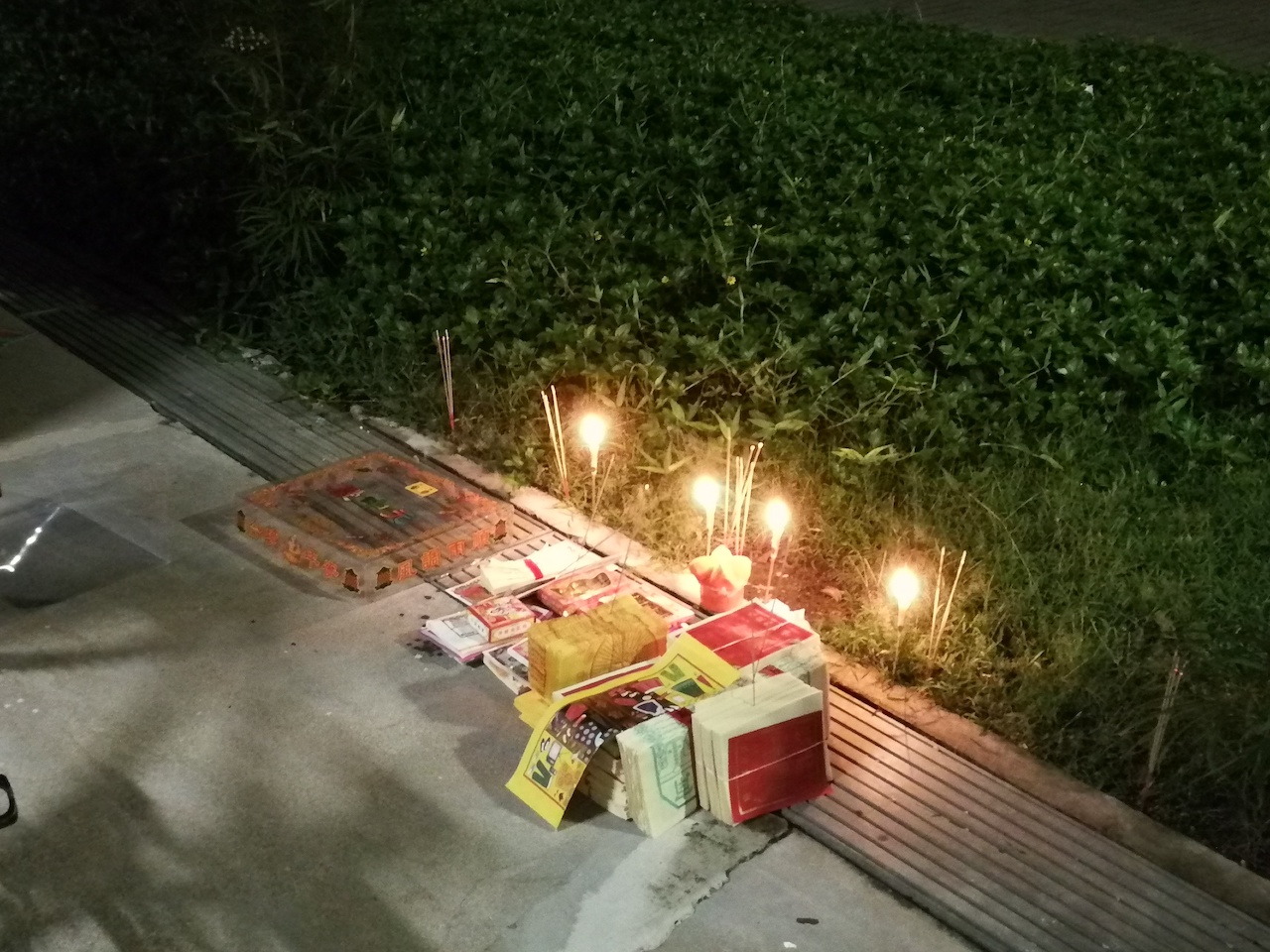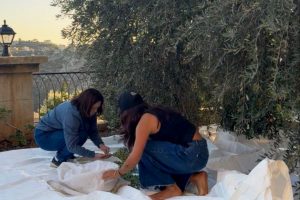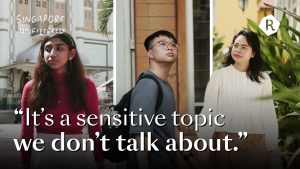All images by the author.
About a week and a half ago, I wrote a post on social media about why it is time for us to reclaim the narrative of the Chinese Seventh Month in Singapore and revitalise it for our future.
Growing up as a millennial, the discourse around the Chinese Seventh Month I was used to hearing was generally negative (and I am saying this as an ethnic Chinese person in majority-Chinese Singapore). Colloquially branded as the Hungry Ghost Festival, I had come to know of the Seventh Month as a season when older, less-educated Singaporeans engage in meaningless rituals to appease unseen beings, hoping that wealth, health, and luck will befall them.
In other words, the Seventh Month was seen as an entire month where personal superstition was played out in ritual practices. Other younger Singaporeans lament the fact that their elders forced them to participate in the festivities, which did not mean anything to them. Further, they were not given answers when they questioned the festival’s significance. Instead, many were told not to question so much and to do what they were told so that ill luck would not befall their families.
In addition, younger people are aware of the potential environmental and health impacts of rituals such as the burning of joss paper. Inconveniences are also caused by the placing of candles and joss sticks on the ground in public spaces and the scattering of joss paper. What seems to annoy Singaporeans the most, however, is the failure of worshippers to clear up after prayer.
This has led to a yearly barrage of complaints in online spaces. Netizens have called for a harsher restriction of these Seventh Month practices. Others have gleefully noted that with fewer young Singaporeans being interested in the festival, it should just be left to disappear quietly into the night as its practitioners get older.
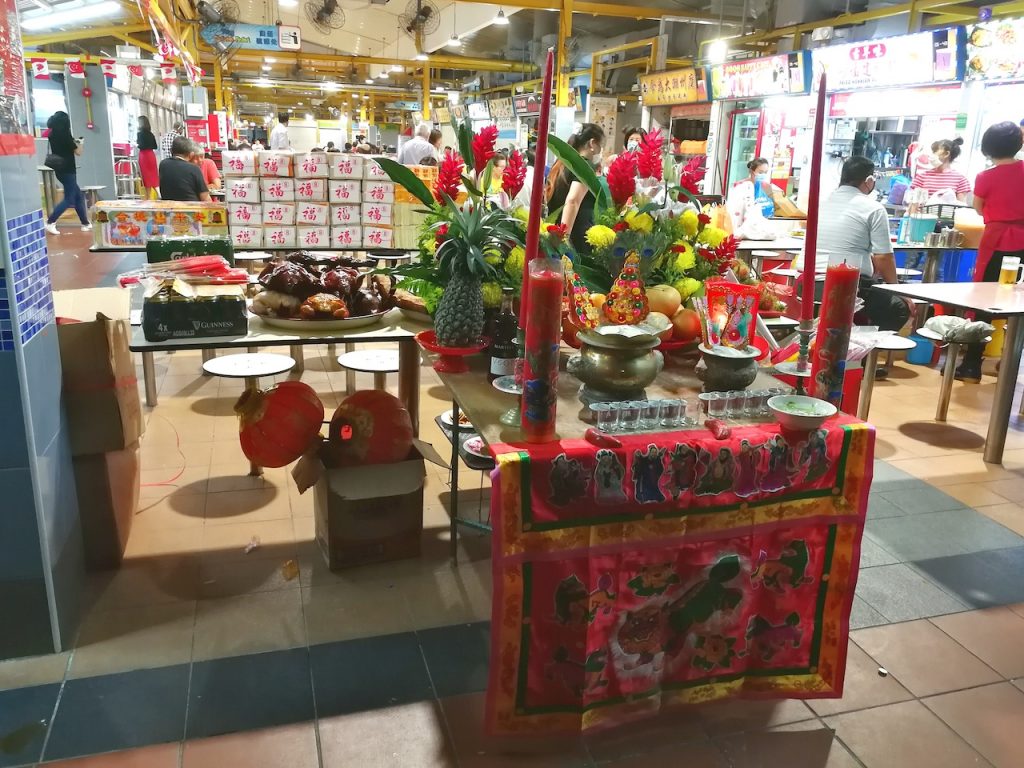
While I understand why many of my millennial counterparts feel that way, I believe that there can be a better way around all these issues without severe restrictions or letting the festival die out. I believe that this lies in the need for us as younger Singaporeans to reclaim and revitalise the festival for the future.
Firstly, I do not deny that the Chinese Seventh Month is religious. However, it is vital for us to see that underlying its religiosity, it is inherently cultural and communal.
Take, for example, the ‘hungry ghosts’, which are commonly seen as the primary target audience of the festival. Buddhists and Taoists might disagree on who these ghosts are and which part of the afterlife they came from. However, without going into the nuances of what they believe in, practitioners generally agree that these ghosts, in one way or another, represent all our departed ancestors.
The worshipping of these wandering spirits, then, represents a veneration of all our ancestors—all those who lived and came before us. The underlying essence of the Seventh Month is bigger and deeper than religion. It is actually about the commemoration of our shared past; the expression of our gratitude for all those who came before, and the establishment of a communal identity.
These are secular values which we all hold as important and meaningful as individuals living in a community. Moreover, one must also understand ritual from a more anthropological lens. Rituals are performed not just for the dead or divine but are a vehicle for the living to express their feelings and thoughts through action.
One can see community celebration at the festival’s heart when more attention is paid to it. Rituals and Getai concerts are conducted in public places. Makeshift altars are built under HDB blocks, at car parks, and beside hawker centres. The festival is meant for everyone to participate in.
If you notice carefully, Seventh Month altars have free joss sticks available for anyone to come by to use. Some altars have little boxes for donations that ensure food offerings and joss sticks are replenished. These point to the underlying notion that the festival is ultimately about building a sense of kinship and cooperation through communal filial piety and societal remembrance.
The festival, thus, is an avenue for the community to express gratitude to all those who preceded us for their part in establishing community. It recognises that everyone who came before us had a part to make us who we are today. It is also for those forgotten souls who fell through the cracks of society and history.
An example of these forgotten souls can be seen in altars set up for those who passed away very young. Offerings of candy, toys, and children’s clothes are placed on these altars as a sign of remembering those who could not live a full life. These souls remain embodiments of hope, love, and joy to their parents, who bore but lost them at a young age.
Most of all, the Seventh Month is about the love for our unknown neighbour, which is why the notion of “wandering spirits” surrounds the whole festival.
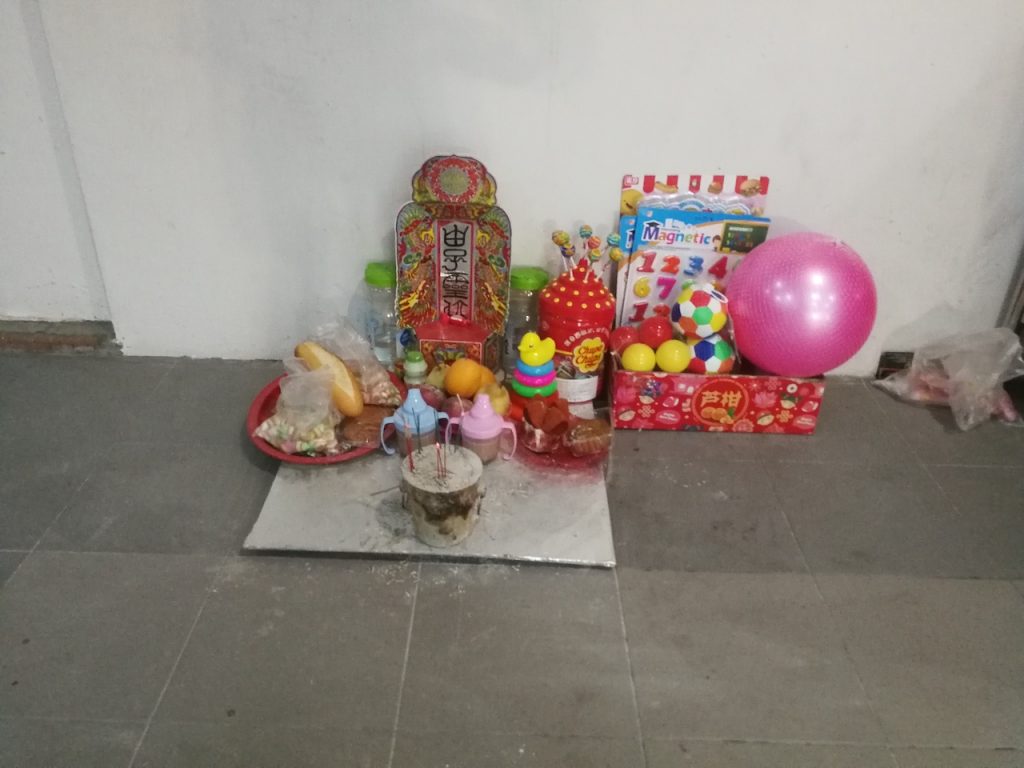
I admit that I used to be cynical about the Seventh Month. It was only after doing some research and talking to my dad, who observes the Seventh Month, that I came to understand what a truly meaningful festival it is.
I realised how reclaiming its inherent narrative would actually assist in creating a more compassionate and understanding community for the future. Reclaiming the narrative of the Seventh Month to me, however, needs to go hand-in-hand with revitalising the festival for a cynical generation and making it relevant for the 21st century. I was inspired to think about how these could occur after living for some time in Los Angeles.
When I was living in LA, I had the opportunity to experience the Day of the Dead festival—a remembrance festival similar to the Seventh Month celebrated by the Mexican community in California. Like the Seventh Month, the Day of the Dead festival at one point in time had been seen as too religious and superstitious.
Apart from older Mexican-Americans, it did not have much attention in the wider community. However, in the 1980s, Mexican artists led the charge in revitalizing the festival in California, making it relevant not only for those of Mexican heritage but for the wider community as well. They did so by combining Mexican religious traditions associated with the festival with modern American pop culture. Art, dance and music forms were intermixed, making the festival go mainstream, appealing to not only the younger generations, but people of ethnicities too.
Today, face painting, processions, concerts, food markets, and altar displays celebrating Mexican culture have become the norm and are held across the state. The revitalisation of the Day of the Dead helped the Mexican community in California to embrace the beauty of their roots, enabling them to be proud advocates of their culture. Altars set up in Mexican family-run businesses quickly became the norm again, and younger generation Mexican-Americans are making it a point to visit the cemeteries during the festival.
In addition, you would see people of all ethnicities participating in the festivities while learning about and enjoying Mexican culture in America. Activists also use the festival to highlight local social issues such as immigration, poverty, and racism.
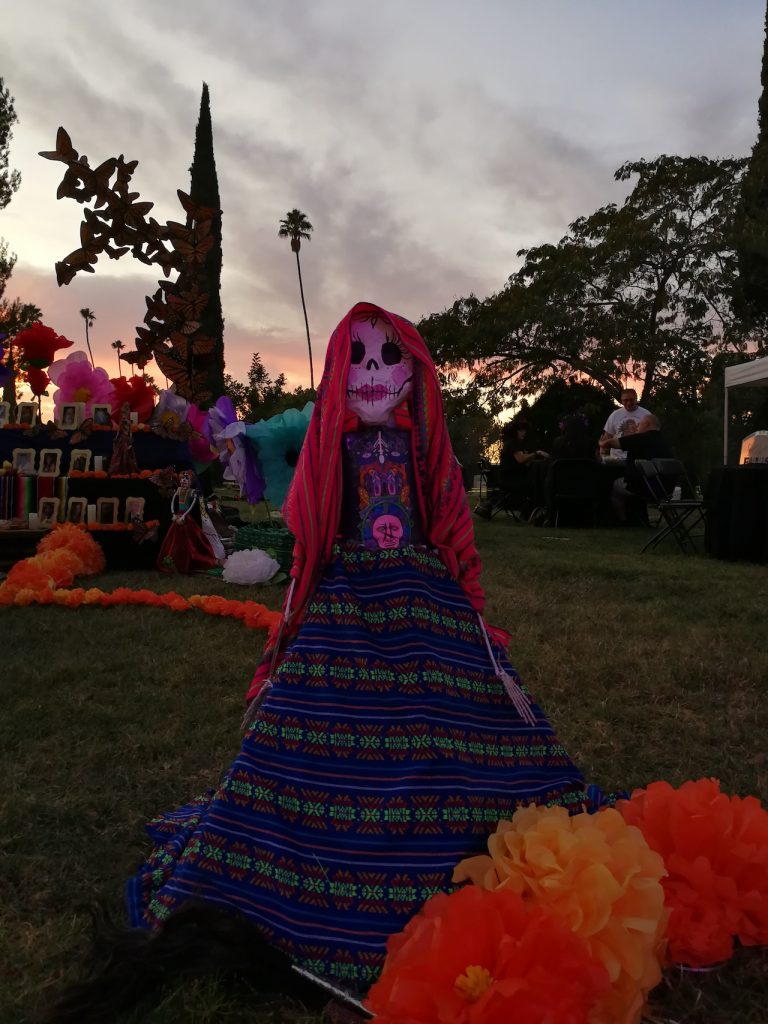
I had the privilege to attend the annual Day of the Dead celebration at the Hollywood Forever Cemetery in LA and encounter this revitalisation first-hand. There was a carnival-like atmosphere to the festivities and the celebration reflected the unique Americana vibe to the commemoration of this ethnic festival.
Mexican elements were combined with contemporary American ones in art exhibitions and music concerts held on site. The event also saw an altar-building competition where, apart from traditional altars being built, people of different ethnicities and nationalities were invited to create altars unique to their own culture but in a style appropriate to the festival.
I saw people of all ages and colours attending the celebration, with many opting to paint their faces and pick up sugar skulls as souvenirs. I could only describe the event as a celebration of Mexican-American culture and the pluralism of California.
I wondered how we could reclaim and re-enchant the Seventh Month to ensure that these deep and meaningful values continue to be commemorated and celebrated. After all, like LA, Singapore is a multicultural city with a vibrant and youthful population excited to move further into the 21st century while embracing their heritage.
Discovering the deeper meaning behind the Seventh Month and seeing how a similar festival was revitalised halfway around the world made me realise how important knowing and celebrating our roots can be in establishing a more cohesive society. This is especially true for generations that are invested in creating individual identity while remaining rooted in community.
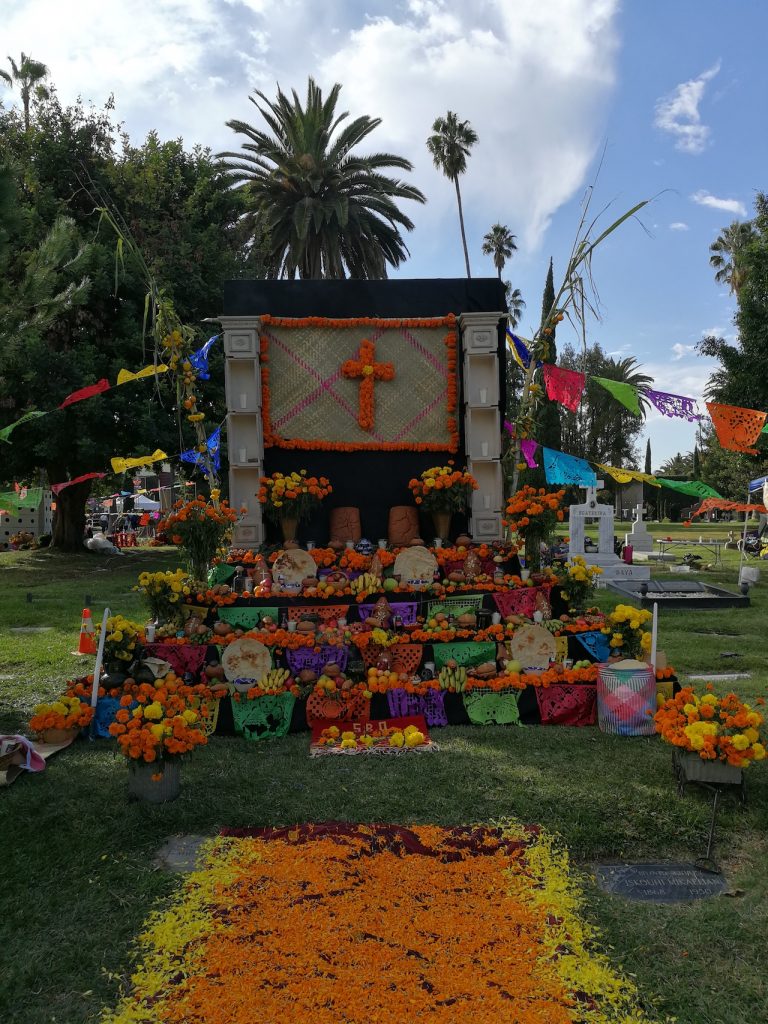

My journey of discovery not only connected me to a heritage greater than myself, but got me to think how the values of my culture can be a positive driving force in creating a pluralistic Singaporean society today. The essence of the Seventh Month in building community through remembering our ancestors extends far beyond the Chinese community. This has to include our friends of other ethnicities as well.
They are an integral part of our community, and their ancestors, too, played a huge part in making us who we are today. To reclaim and revitalise the Seventh Month then, is for us to think how we would be able to make the festival relevant for all of us as an entire country while celebrating its Chinese roots.
I anticipate with awe and hope for a more hybrid and multicultural Singaporean Seventh Month. This would also mean that the religious aspect of the festival would be better understood by everyone simply because people would be more familiar with the festival.
However, revitalising the festival for the wider society would also mean that certain religious practices would need to evolve and adapt. This might mean more discreet burning of incense papers and the intentional clearing up of candles and joss sticks on the roadside after prayer. The Seventh Month’s focus on community at its core has to reflect the necessity for all of us to take ownership of our living community, be respectful to those of different traditions, and preserve the environment for all to enjoy.
Could Getai concerts be made bilingual and modernised for a younger audience? Could there be altar-building competitions and community processions organised throughout the month for anyone to participate? Could there be fairs, exhibitions, food, and night markets to celebrate local Chinese culture and raise awareness of social issues? Could there be a cleaner and greener way for rituals to take place?
What the Seventh Month looks like for Singaporeans in the future is anyone’s guess, but I am certain that reclaiming it will have more positive outcomes for the future.

I recall a short conversation I had with a Taoist friend who noted that the exact origins of the Seventh Month are debated. Still, its practices do evolve slightly with every generation.The festival’s essence and its values of community and remembrance, however, remain fixed throughout the centuries.
Thus, with these core values in mind, I hope for the reclamation and revitalisation of the Seventh Month to be an organic one—and for younger generations to spearhead.

